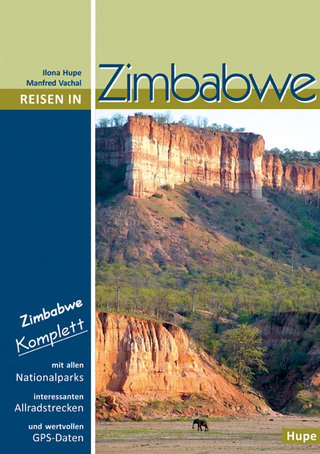
Picturing Bushmen
The Denver African Expedition of 1925
Seiten
1997
Ohio University Press (Verlag)
978-0-8214-1187-2 (ISBN)
Ohio University Press (Verlag)
978-0-8214-1187-2 (ISBN)
- Titel z.Zt. nicht lieferbar
- Versandkostenfrei innerhalb Deutschlands
- Auch auf Rechnung
- Verfügbarkeit in der Filiale vor Ort prüfen
- Artikel merken
The Denver African Expedition of 1925 sought “the cradle of Humanity.” The explorers returned claiming to have found the “Missing Link” in the Heikum bushmen of the Kalahari—and they proceeded to market this image. As Robert J. Gordon shows in Picturing Bushmen, the impact of the expedition lay not simply in its slick merchandising of bushmen images but also in the fact that the pictures were exotic and aesthetically pleasing. Like all significant events, the expedition and its images had unanticipated consequences.
The Denver Expedition played a key role in romanticizing bushmen. Indeed, its image of bushmen has permeated Western mass culture. Before the expedition, bushmen commonly had been presented as impoverished savages. In its wake, the bushmen of South Africa have inspired commercial advertisements, art exhibitions, and novels. Bushmen are frequently the archetypal “other” to Western intellectual and popular thought. Explaining the impact of the expedition involves, in part, considering the culture of visualization that gave the expedition direction and in turn was influenced by it.
Although Rob Gordon is an anthropologist, this study ranges into questions of film theory, history, and popular culture. It offers a perspective on coffee-table books, ethnology, and the nature of research on those labeled “others.” While suggesting how “ethnographic photographs” might be appreciated, Picturing Bushmen is also a subtle analysis of the perennial issues that haunt field workers—especially what and how they “see” and how their perception is influenced by the mundane in their own societies.
The Denver Expedition played a key role in romanticizing bushmen. Indeed, its image of bushmen has permeated Western mass culture. Before the expedition, bushmen commonly had been presented as impoverished savages. In its wake, the bushmen of South Africa have inspired commercial advertisements, art exhibitions, and novels. Bushmen are frequently the archetypal “other” to Western intellectual and popular thought. Explaining the impact of the expedition involves, in part, considering the culture of visualization that gave the expedition direction and in turn was influenced by it.
Although Rob Gordon is an anthropologist, this study ranges into questions of film theory, history, and popular culture. It offers a perspective on coffee-table books, ethnology, and the nature of research on those labeled “others.” While suggesting how “ethnographic photographs” might be appreciated, Picturing Bushmen is also a subtle analysis of the perennial issues that haunt field workers—especially what and how they “see” and how their perception is influenced by the mundane in their own societies.
Robert J. Gordon has worked for long periods in South Africa, Papua New Guinea, and Lesotho. His other books include Mines, Migrants and Masters: Life in a Namibian Mine Compound, The Bushmen Myth and the Making of a Namibian Underclass, and Law and Order in the New Guinea Highlands (with Mervyn Meggitt). He is Professor of Anthropology at the University of Vermont.
| Erscheint lt. Verlag | 1.11.1997 |
|---|---|
| Verlagsort | Athens |
| Sprache | englisch |
| Maße | 178 x 254 mm |
| Themenwelt | Reisen ► Reiseführer ► Afrika |
| Geisteswissenschaften | |
| Sozialwissenschaften ► Ethnologie | |
| Sozialwissenschaften ► Soziologie | |
| ISBN-10 | 0-8214-1187-X / 082141187X |
| ISBN-13 | 978-0-8214-1187-2 / 9780821411872 |
| Zustand | Neuware |
| Haben Sie eine Frage zum Produkt? |
Mehr entdecken
aus dem Bereich
aus dem Bereich
Ein Reisebegleiter für Natur und Abenteuer ; mit allen Nationalparks, …
Buch | Softcover (2024)
Hupe, I (Verlag)
28,90 €


